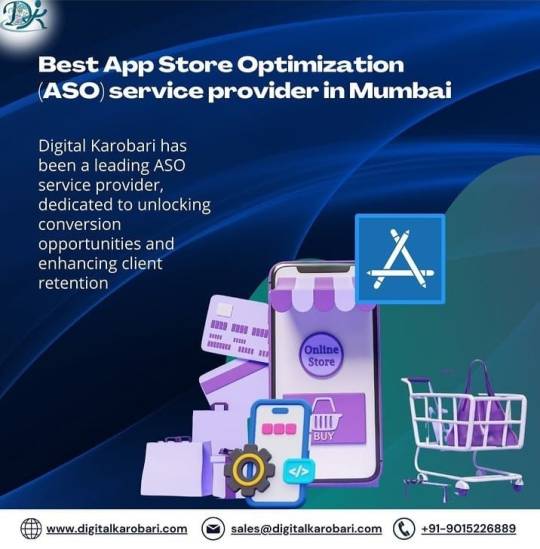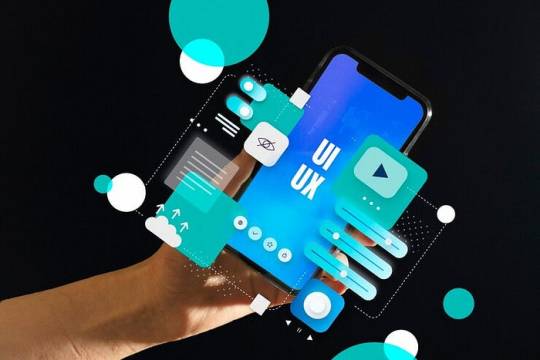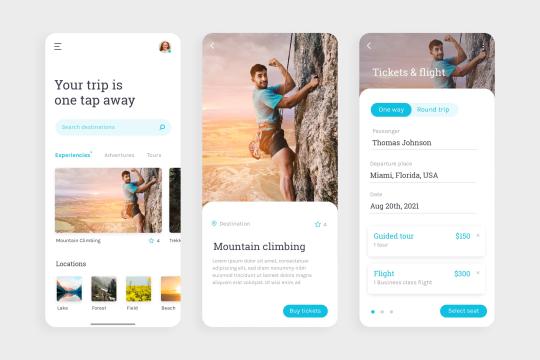#AppOptimization
Explore tagged Tumblr posts
Text

Run Applications Smoothly with Application Management Services
Application management and support services make sure businesses are able to run applications smoothly and securely. Services like monitoring, troubleshooting, updates, and user support help fulfil different business needs. AMS can maximize application value through proactive maintenance and constant improvement.
#AppManagement#ApplicationServices#SoftwareSupport#AppOptimization#AppMaintenance#EnterpriseSupport#AppMonitoring#AppManagementServices#ITConsulting#CloudSupport#DigitalTransformation#ITInfrastructure
0 notes
Text
React Best Practices: Build Scalable & High-Performing Apps
Learn proven React best practices to build clean, efficient, and high-performing ReactJS apps. Explore tips on component structure, state management, and optimization.
#ReactJS#WebDevelopment#AppOptimization#FrontendDevelopment#JavaScriptTips#CodeQuality#ReactBestPractices#HireReactJSDevelopers
0 notes
Text
Mobile App Magic: Transforming Ideas into Reality
The Future of Mobile Apps: Trends and Technologies.
Introduction
In today’s fast-evolving digital landscape, mobile applications have revolutionized how businesses connect with customers, streamline operations, and enhance user experiences. A well-developed mobile app can boost brand loyalty, drive revenue, and provide seamless interaction between businesses and users. Mobile app magic lies in optimizing app performance, improving user engagement, and leveraging cutting-edge technologies to stay ahead in the market.
What is Mobile App Magic?
Mobile app magic refers to the strategies, tools, and innovations used to create high-performing, user-friendly, and engaging mobile applications. It involves UI/UX enhancements, performance optimization, security measures, and data-driven decision-making to deliver seamless mobile experiences.
Types of Mobile App Magic Strategies
Building a powerful mobile application requires various strategic approaches:
User-Centric Design
Creating intuitive and visually appealing interfaces.
Prioritizing seamless navigation and user experience.
Implementing accessibility-friendly features.
Performance Optimization
Reducing load time and optimizing responsiveness.
Implementing efficient coding practices and backend optimizations.
Using caching and compression techniques for faster performance.
Mobile App Marketing & Monetization
Using ASO (App Store Optimization) for better visibility.
Running targeted ad campaigns to attract users.
Implementing monetization models like in-app purchases and subscriptions.
Security & Data Protection
Ensuring app security with encryption and authentication mechanisms.
Protecting user data with compliance to regulations like GDPR.
Regular security audits to detect vulnerabilities.
Key Stages of Mobile App Development & Enhancement
Strategy & Planning
Define app objectives and target audience.
Research market trends and competitor apps.
Choose the right technology stack and platform (iOS, Android, or both).
UI/UX Design & Prototyping
Develop wireframes and interactive prototypes.
Focus on engaging and user-friendly designs.
Gather user feedback to refine designs.
App Development & Coding
Build frontend and backend architecture.
Integrate APIs, payment gateways, and cloud services.
Implement scalability and performance-boosting techniques.
Testing & Quality Assurance
Conduct functional, security, and performance testing.
Identify and fix bugs before deployment.
Perform beta testing with real users for feedback.
Deployment & App Store Optimization
Publish the app on Google Play Store and Apple App Store.
Optimize app descriptions, keywords, and visuals.
Monitor initial user feedback and make necessary improvements.
Maintenance & Continuous Improvement
Regularly update the app with new features and bug fixes.
Optimize app performance and security.
Keep up with the latest mobile technology trends.
Best Practices for Mobile App Success
✔ Ensure a seamless user experience with smooth navigation. ✔ Optimize app loading speed and responsiveness. ✔ Use push notifications strategically to engage users. ✔ Implement strong security measures to protect user data. ✔ Leverage analytics to track user behavior and improve the app. ✔ Stay updated with the latest trends in mobile app development. ✔ Regularly update the app to enhance user experience.
Conclusion
Mobile app magic is all about creating engaging, efficient, and high-performing applications that meet user needs and business objectives. By implementing innovative features, optimizing performance, and leveraging analytics, businesses can enhance their mobile presence and drive long-term success. With the right strategies, a well-developed mobile app can become a game-changer in today’s competitive digital world.
Would you like recommendations for mobile app development tools or platform-specific strategies? 🚀
#Mobile App Magic:#1.#MobileAppDevelopment#2.#AppInnovation#3.#UserExperience#4.#AppOptimization#5.#TechMagic
0 notes
Text
#MobileAppMaintenance#AppUpdates#UIUXDesign#BugFixes#AppSupport#StamensSoftware#AppOptimization#BusinessGrowth
0 notes
Text
#5G#MobileAppDevelopment#AppPerformance#TechnologyTrends#MobileApps#5GTechnology#AppOptimization#MobileUserExperience#FutureTech#TechInnovation#MobileDevelopment#5GImpact
1 note
·
View note
Text
Best App Store Optimization (ASO) Service Provider Agency in Mumbai - Digital Karobari

#AppStoreOptimization#ASOAgency#ASOServices#AppMarketing#ASOExperts#AppVisibility#AppOptimization#AppStoreASO
0 notes
Text

0 notes
Text
youtube
📱 Take Control of Your Mobile App's Performance with MageNative's Analytics Dashboard!
Want to know how your mobile app is performing? MageNative's powerful Mobile App Analytics Dashboard has got you covered! From tracking user behavior to monitoring conversion rates, our dashboard gives you real-time insights into everything that matters for growing your business.
Watch this quick video to see how easy it is to access key metrics, optimize your app’s performance, and make data-driven decisions to boost your sales and user engagement. Whether you're running a Shopify store or managing any eCommerce app, MageNative’s dashboard helps you stay on top of your game!
Try: MageNative Mobile App Builder
#MobileApp#Analytics#MageNative#EcommerceApps#Shopify#AppPerformance#AppMetrics#Dashboard#DataDriven#BusinessGrowth#AppOptimization#Youtube
0 notes
Text
Innovative Mobile App Development Solutions for Businesses
At SN Digitech, we specialize in creating cutting-edge mobile apps tailored to meet your business needs. Our team of expert developers is committed to delivering user-friendly, secure, and scalable mobile applications that enhance customer engagement and drive business growth. We design custom apps across iOS, Android, and cross-platform frameworks, ensuring seamless functionality and a superior user experience.
From concept to deployment, we follow an agile approach, focusing on performance, reliability, and innovation. Whether it's a startup looking to build an MVP or an established brand aiming to enhance its digital presence, SN Digitech provides end-to-end mobile app development services, including UI/UX design, coding, testing, and post-launch support. Empower your business with our tailor-made mobile solutions and stay ahead in the competitive market.
Let us turn your vision into reality with a powerful mobile app that delivers results!
#MobileAppDevelopment#AppDevelopment#iOSAppDevelopment#AndroidAppDevelopment#CrossPlatformApps#CustomAppDevelopment#MobileSolutions#AppDesign#UIUXDesign#AppDevelopmentServices#MobileAppDesign#BusinessApps#EnterpriseApps#MobileAppDevelopers#AppDevelopmentCompany#AppTesting#AppDeployment#AgileDevelopment#AppOptimization#AppMaintenance
0 notes
Text
In today’s digital-first world, mobile apps are essential for businesses to stay connected with their customers. A well-designed and functional mobile app can help improve customer engagement, drive sales, and enhance brand visibility. At Xaltam, we specialize in mobile app design, development, and maintenance, offering customized solutions tailored to your business’s unique needs.
Mobile App Design: Crafting User-Centric Experiences

Designing a mobile app goes beyond aesthetics. It’s about creating an intuitive user experience that keeps users coming back. At Xaltam, we focus on user-centric design, ensuring that your app is visually appealing and easy to navigate. We incorporate responsive design principles to create apps that work seamlessly across various devices and platforms.
Mobile App Development: Building High-Performance Applications
Once the design is finalized, it’s time to bring the concept to life. At Xaltam, our team of experienced developers uses cutting-edge technologies to build apps that are fast, secure, and scalable. We offer both iOS and Android app development, ensuring that your app reaches a wider audience. With our expertise in cross-platform development, we provide cost-effective solutions that don’t compromise on quality.
Mobile App Maintenance: Keeping Your App at Peak Performance
After your app is live, continuous maintenance is crucial to ensure its smooth functioning. Our maintenance services at Xaltam include regular updates, bug fixes, and performance optimization. We monitor your app to ensure it stays up-to-date with the latest operating system requirements and security standards. Whether it’s adding new features or improving existing ones, we’ve got you covered.
Why Choose Xaltam for Mobile App Solutions?
Customized Solutions: We design and develop apps tailored to your business objectives.
Full-Cycle Services: From design to development and maintenance, we handle it all.
Cost-Effective Development: Cross-platform solutions that save time and resources.
Expert Team: Skilled developers and designers committed to delivering quality.
Choosing Xaltam means partnering with a company that prioritizes both innovation and customer satisfaction. Whether you’re a startup looking to break into the app market or an established business aiming to enhance your digital presence, our mobile app solutions are designed to grow with you.
#MobileAppDesign#AppDevelopment#AppMaintenance#XaltamSolutions#UserExperienceDesign#CrossPlatformDevelopment#MobileAppDevelopment#TechSolutions#AppOptimization#BusinessApps
0 notes
Text
Optimizing Business Performance with Application Management & Support Services
Improve efficiency with expert application management services specially personalised for you and make sure of smooth operations, proactive support, and system optimization for business success.
#AppManagement#ApplicationServices#SoftwareSupport#AppOptimization#AppMaintenance#EnterpriseSupport#AppMonitoring#AppManagementServices#ITConsulting#CloudSupport#DigitalTransformation#ITInfrastructure
0 notes
Text
How to Optimize Your Android App for Performance and Speed 🏎️

In today’s fast-paced digital world, users expect their mobile apps to be lightning-fast and ultra-responsive. Performance is crucial for any successful Android application. Here are some effective strategies to optimize your Android app for performance and speed.
1. Simplify Layouts 🏗️
Complex layouts can slow down your app’s performance. Simplify your layout hierarchies to reduce rendering time.
Tips:
Use efficient layouts.
Avoid nested ScrollViews.
2. Efficient Image Handling 📸
Images can significantly impact performance. Load and cache images efficiently.
Tips:
Use image loading libraries.
Optimize image sizes and formats.
3. Minimize Memory Usage 🧠
Excessive memory usage can lead to slowdowns. Manage memory usage effectively.
Tips:
Avoid memory leaks.
Use efficient data structures.
4. Optimize Network Calls 🌐
Network calls can cause lag. Optimize them to prevent blocking the main thread.
Tips:
Use asynchronous network calls.
Implement caching strategies.
5. Reduce App Size 📦
A smaller app size can improve performance. Reduce the APK size for faster load times.
Tips:
Remove unused resources and code.
Enable resource shrinking.
6. Optimize Database Access 📊
Frequent database access can slow down your app. Optimize database operations for efficiency.
Tips:
Use indexing.
Perform operations on a background thread.
7. Use Profiling Tools 🔍
Identify performance bottlenecks and memory leaks with Android Studio’s profiling tools.
Tips:
Analyze CPU usage.
Track memory allocations.
Monitor network activity
8. Optimize Startup Time ⏱️
A slow startup time can frustrate users. Improve your app’s startup time for better user experience.
Tips:
Avoid heavy operations during initialization.
Use a splash screen.
Preload data asynchronously.
9. Enable Hardware Acceleration 🎨
Improve performance by offloading rendering to the GPU.
Tips:
Enable hardware acceleration.
Optimize custom views.
10. Smooth Animations ✨
Smooth animations enhance user experience. Avoid poorly implemented animations.
Tips:
Use efficient animation techniques.
Reduce overlapping views.
Conclusion 🎯
Optimizing your Android app for performance and speed is essential for providing a seamless user experience. By following these strategies, you can ensure your app runs smoothly, responds quickly, and retains users. Regularly profile your app, identify bottlenecks, and make improvements to maintain optimal performance.
By focusing on these key areas, you can create an Android app that exceeds user expectations in terms of performance and speed.
0 notes
Text
Transforming User Experience: Progressive Web App Development with React and Angular
With this in-depth guide on Progressive Web App (PWA) development, you can explore the future of mobile app development. Discover how to develop smooth, fast PWAs that simulate native apps by utilizing the combined power of Angular and React.
Learn about the benefits of PWAs, such as increased user engagement, quick loading times, and offline capabilities. Our in-depth knowledge will help you navigate the complexities of creating dependable and scalable Progressive Web App development, from basic setup to sophisticated optimization strategies.
Gain a competitive edge in the mobile app development space by becoming an expert in using a progressive web app react and angular progressive web app to create dynamic, responsive, and effective Progressive Web App development.
Whether you're a beginner or an experienced developer, our guide offers valuable tips and best practices for enhancing your skills and delivering top-notch user experiences.
#stigasoft#PWADevelopment#progressive web apps#mobile app development#angular#React#PWABenefits#appoptimization#web app development#FutureOfMobileApps#techinnovation
0 notes
Text
How to Optimize Mobile App Design for Speed

In today’s fast-paced digital world, users demand swift and seamless experiences from mobile applications. A slow app can lead to user frustration, high abandonment rates, and ultimately, negative reviews. Therefore, optimizing mobile app design for speed is crucial for ensuring user satisfaction and achieving high conversion rates. This comprehensive guide explores the best practices for creating a lightning-fast mobile app.
Understanding the Importance of Speed in Mobile App Design
User Expectations and Behavior
Users have become accustomed to instant access and quick interactions. Studies show that the average mobile user expects an app to load within two seconds. If an app takes longer, users are likely to abandon it in favor of a faster alternative. Speed directly impacts user retention, engagement, and overall satisfaction.
Impact on Conversion Rates
Speed is not just about user experience; it also affects conversion rates. A fast app encourages users to stay longer and engage more, increasing the likelihood of conversions, whether it’s making a purchase, signing up for a service, or completing any desired action.
Key Strategies for Optimizing Mobile App Speed
Efficient Coding Practices
Minimize Code Complexity
Writing clean, efficient, and minimal code is fundamental. Reducing the complexity of the codebase helps in faster execution. Avoid redundant code and use efficient algorithms to streamline processes.
Optimize Loops and Conditional Statements
Loops and conditional statements can slow down an app if not optimized. Ensure that loops run efficiently and conditional statements are simplified to reduce processing time.
Image Optimization
Use Compressed Image Formats
Images are often the largest elements in an app, significantly affecting load times. Use compressed formats like JPEG or WebP to reduce file size without compromising quality.
Implement Lazy Loading
Lazy loading defers the loading of images until they are needed, such as when they come into the user’s viewport. This approach reduces initial load times and improves perceived performance.
Data Management
Efficient Data Fetching
Fetch only the necessary data required for the immediate user interaction. Using pagination or infinite scroll can help manage large datasets efficiently.
Cache Data Locally
Local caching reduces the need to fetch data from the server repeatedly. Implementing smart caching strategies ensures that frequently accessed data is available instantly.
Network Optimization
Reduce API Call Overheads
Reduce the quantity of API queries made by grouping requests together.Batch multiple requests into a single call when possible to reduce network overhead.
Use Content Delivery Networks (CDNs)
CDNs distribute content across multiple servers globally, reducing the distance data has to travel. This results in faster load times, especially for global user bases.
Performance Monitoring and Testing
Continuous Performance Testing
Regularly test the app’s performance using automated tools to identify and address bottlenecks. Tools like JMeter and Appium can simulate user interactions and provide detailed performance metrics.
Real-User Monitoring
Implement real-user monitoring to gather performance data from actual users. This provides insights into real-world performance issues that automated testing might miss.
Frontend Optimization
Minimize DOM Elements
A large number of DOM elements can slow down rendering. Keep the DOM tree shallow and reduce the number of elements to enhance rendering speed.
Use Hardware Acceleration
Leverage the device’s GPU for rendering complex graphics and animations. Using CSS properties like transform and opacity can trigger hardware acceleration, improving performance.
Background Processes Management
Optimize Background Tasks
Background tasks can consume resources and slow down the app. Optimize these tasks to run efficiently without impacting the app’s performance. Use background processing judiciously to balance performance and functionality.
Use Efficient Algorithms for Data Processing
Implement efficient algorithms for tasks like data sorting, searching, and filtering. Efficient algorithms reduce processing time and improve overall app speed.
Advanced Techniques for Speed Optimization
Progressive Web App (PWA) Techniques
Implementing PWA techniques can enhance the speed and performance of mobile apps. Features like service workers enable background syncing and caching, providing a seamless user experience even with poor network conditions.
App Bundle Optimization
Use Android App Bundles and iOS App Thinning to optimize the size of your app. These techniques deliver only the necessary resources to the user’s device, reducing download and installation times.
Preloading and Prefetching
Preloading critical resources and prefetching data that might be needed soon can significantly improve load times. This technique anticipates user actions and prepares resources in advance.
Conclusion
Optimizing mobile app design for speed is a multifaceted approach that requires attention to coding practices, image and data management, network optimization, and performance monitoring. By implementing these strategies, you can create a mobile app that meets user expectations, enhances engagement, and drives conversions. Keep in mind that every millisecond matters in the realm of mobile apps.
#MobileAppDesign#AppOptimization#UserExperience#MobilePerformance#FastLoadingApps#EfficientCoding#ImageOptimization#DataManagement#NetworkOptimization#PerformanceTesting#FrontendOptimization#BackgroundProcessing#SpeedOptimization#ProgressiveWebApps#AppBundleOptimization#Preloading#Prefetching#UserRetention#ConversionRates#MobileAppDevelopment#PerformanceMonitoring
0 notes
Text
It's quiz time! 📱🔍Ready to prove your mobile app development skills? Test your knowledge and see how you stack up. Challenge yourself and share your results with friends!
What is the purpose of beta testing in mobile app development? a) To assess user interface design b) To optimize app performance c) To identify and fix bugs before release d) To generate marketing buzz . . ➡️For more information, please visit our website:- https://zoofinc.com/ ➡Your Success Story Begins Here. Let's Grow Your Business with us!
👉Do not forget to share with someone whom it is needed. 👉Let us know your opinion in the comment down below 👉Follow @Zoof Software Solutions for more information . . ✔️Feel free to ask any query at [email protected] ✔️For more detail visit: https://zoof.co.in/ . . .
#MobileAppDevelopment#BetaTesting#AppTesting#AppPerformance#UserInterface#AppRelease#SoftwareTesting#TechQA#AppOptimization#MobileDev#QualityAssurance#webappsoftwaredevelopment#bestITservice#ZoofUnitedStates#ZoofIndia#SoftwareCompany#StartUpTechnology#mobilefriendlywebsite#Resourceoutsourcing#TechnologyConsulting#GrowBusiness#WebsiteDevelopment#SoftwareConsultant#ZoofSoftwareSolutions#zoof#zoofinc#AwardWinningCompany#BestSoftwareCompany#DigitalMarketing
0 notes
Text
"Enhance your app's UI/UX performance with our top-notch optimization services in Patna. At Hexile Service Pvt. Ltd, we specialize in website development and designing in Patna. Elevate your user experience today!"
Call Us:- +91 9319934449 / +91 9334044680
Visit:- https://www.hexileservices.com
#AppOptimization#uiuxdesign#webdesigning#webdevelopment#patnatech#growbusinessonline#hexileservices#T20WorldCup2024#RAVINDRASINGHBHATI#NoVoteToBJP#NehaSharma#ToxicTheMovie#whatsappstatus#kiaraadvani#Facebooking#FacebookPage#instareel#like4likes#PatnaSahib#callnow
0 notes